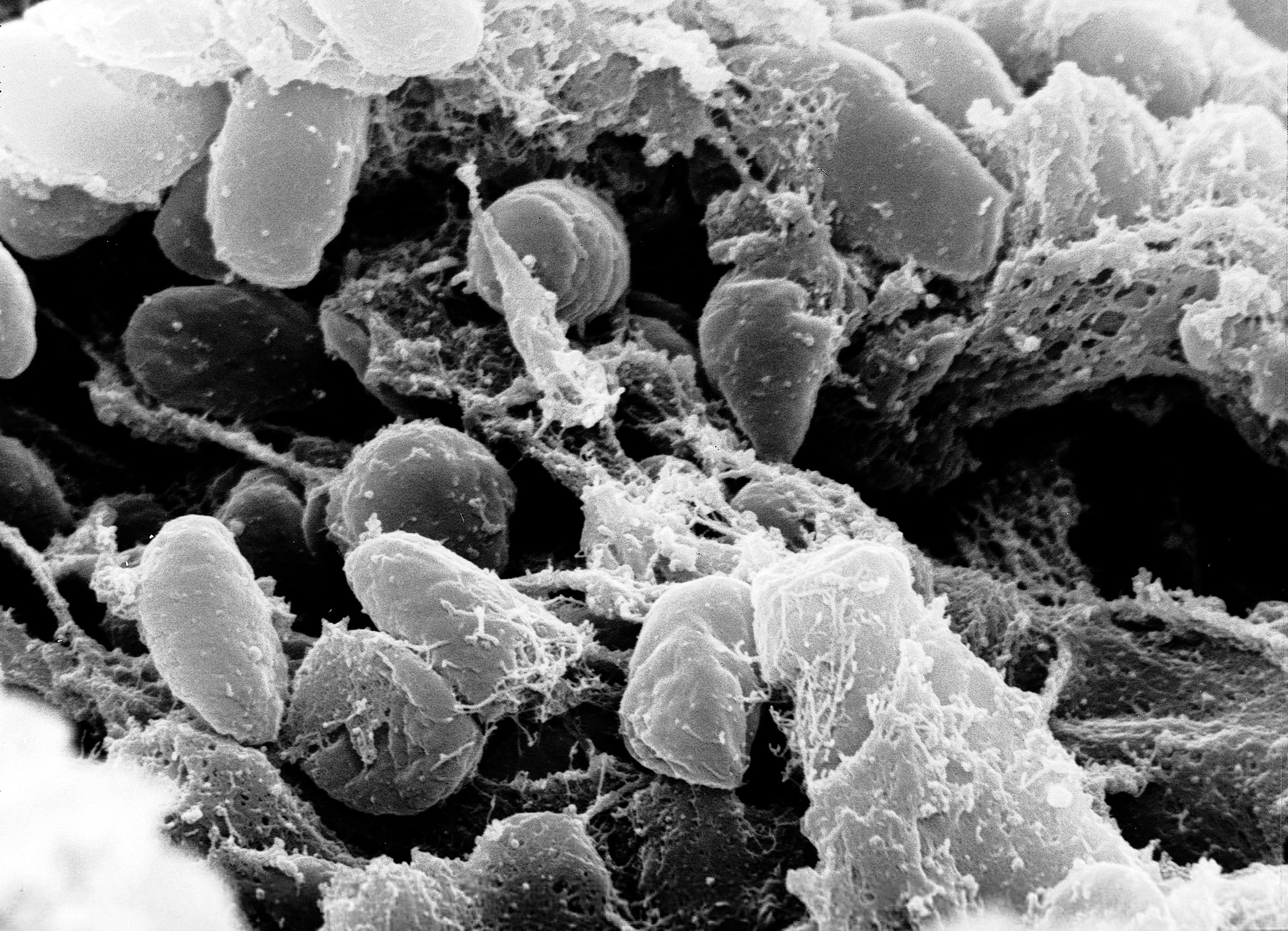 Sequencing Yersinia pestis, the bacterium that caused the Black Plague in Europe during 1348–50, is an amazing accomplishment. Y. pestis infection still occurs sporatically and causes fatalities despite the Age of Antibiotics. Even with animal models, there are questions remaining about the progression of infection. Nham et al. used in vivo imaging to examine the course of infection in a mouse animal model using a bioluminescent clone of Y. pestis. Continue reading “Tracking the Progression of Plague Using Bioluminescence”
Sequencing Yersinia pestis, the bacterium that caused the Black Plague in Europe during 1348–50, is an amazing accomplishment. Y. pestis infection still occurs sporatically and causes fatalities despite the Age of Antibiotics. Even with animal models, there are questions remaining about the progression of infection. Nham et al. used in vivo imaging to examine the course of infection in a mouse animal model using a bioluminescent clone of Y. pestis. Continue reading “Tracking the Progression of Plague Using Bioluminescence”
yersinia pestis
Sequencing the Black Death is a Window to the Past
After writing my review of the Proceedings of the National Academy of Sciences USA article “Targeted enrichment of ancient pathogens yielding the pPCP1 plasmid of Yersinia pestis from victims of the Black Death”, I vaguely wondered if the authors could have sequenced more than a single 10kb plasmid. If the single-copy chromosomal DNA was too scarce, maybe one of the other Yersina pestis plasmids that may exist at a higher copy number (e.g., pMT1) might be sequenced. Continue reading “Sequencing the Black Death is a Window to the Past”
Dance Macabre: Will 14th Century Remains Reveal the Pandemic Secrets of the Black Death?
 Last year, I reviewed a PLoS Pathogens paper that found European Black Plague victims from the mid 14th century were infected with more than one clone of Yersinia pestis. While the Y. pestis-specific sequences amplified from several skeletal samples from various countries were evidence of the bacterium as the etiological agent, questions still remained about the virulence of the outbreak. What allowed that ancient strain of Y. pestis to cause such widespread death? Another group of researchers decided to further analyze the causative agent of the Black Plague by enriching for and sequencing one of the extrachromasomal plasmids present in the bacterial genome: the 9.6kb virulence-associated pPCP1 plasmid. Continue reading “Dance Macabre: Will 14th Century Remains Reveal the Pandemic Secrets of the Black Death?”
Last year, I reviewed a PLoS Pathogens paper that found European Black Plague victims from the mid 14th century were infected with more than one clone of Yersinia pestis. While the Y. pestis-specific sequences amplified from several skeletal samples from various countries were evidence of the bacterium as the etiological agent, questions still remained about the virulence of the outbreak. What allowed that ancient strain of Y. pestis to cause such widespread death? Another group of researchers decided to further analyze the causative agent of the Black Plague by enriching for and sequencing one of the extrachromasomal plasmids present in the bacterial genome: the 9.6kb virulence-associated pPCP1 plasmid. Continue reading “Dance Macabre: Will 14th Century Remains Reveal the Pandemic Secrets of the Black Death?”
What Caused the Black Death?

I was confident I knew a few things about the bubonic plague: It was caused by the bacterium Yersinia pestis, which was transmitted to humans by fleas hitching a ride on the back of traveling rats. It spread rapidly and devastated populations around the globe, and because cats, a natural predator of scurrying rodents, had been killed, rats proliferated along with their deadly, infectious cargo. However, until I read a recent PLoS ONE article, I did not realize there was still debate about whether Yersinia pestis was the infectious agent for Black Death, the disease that ravaged 14th century Europe and killed one third of its population.

